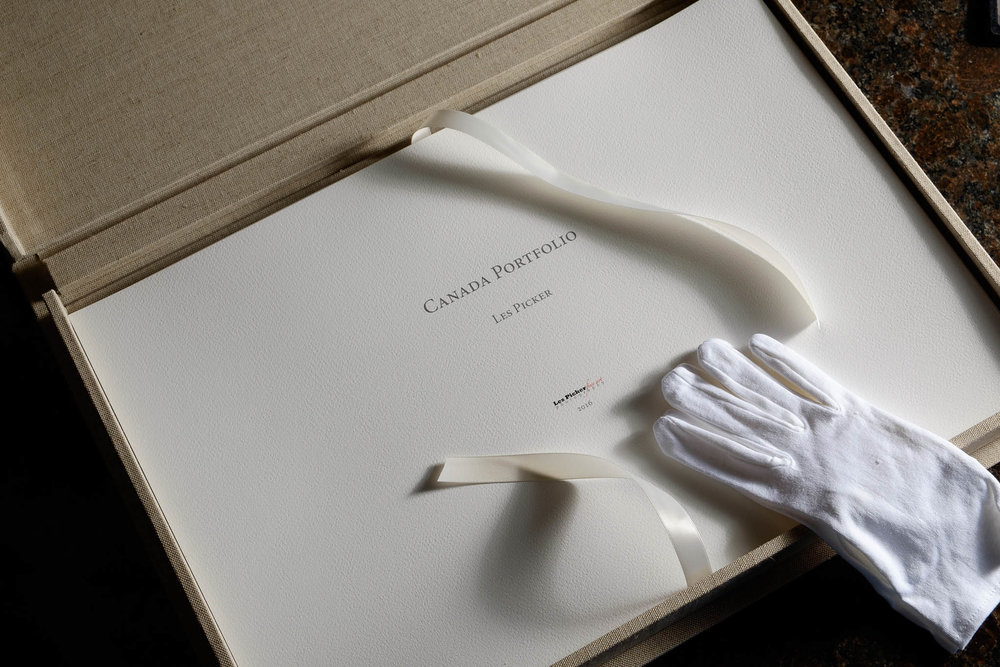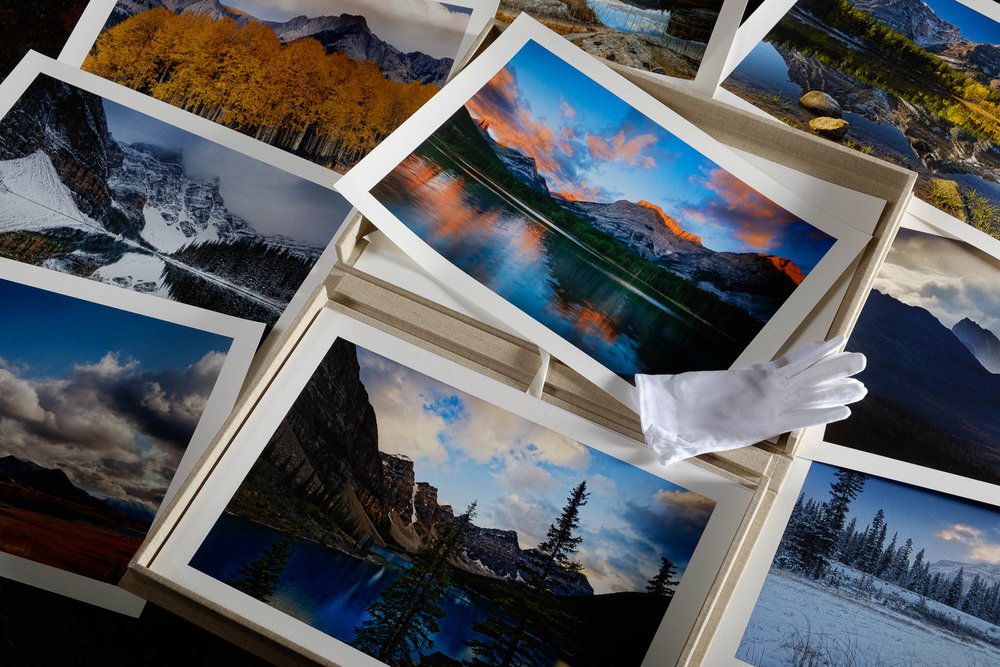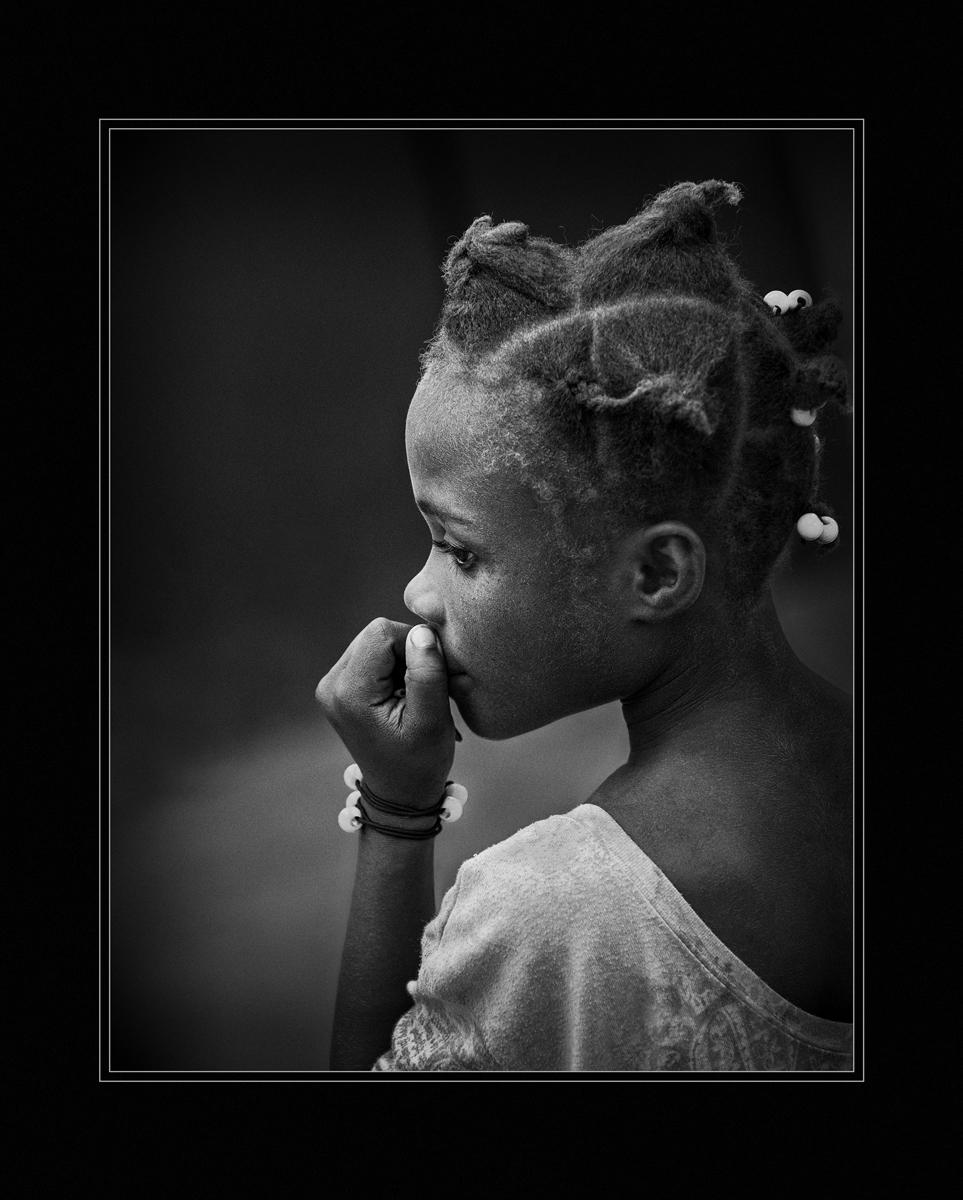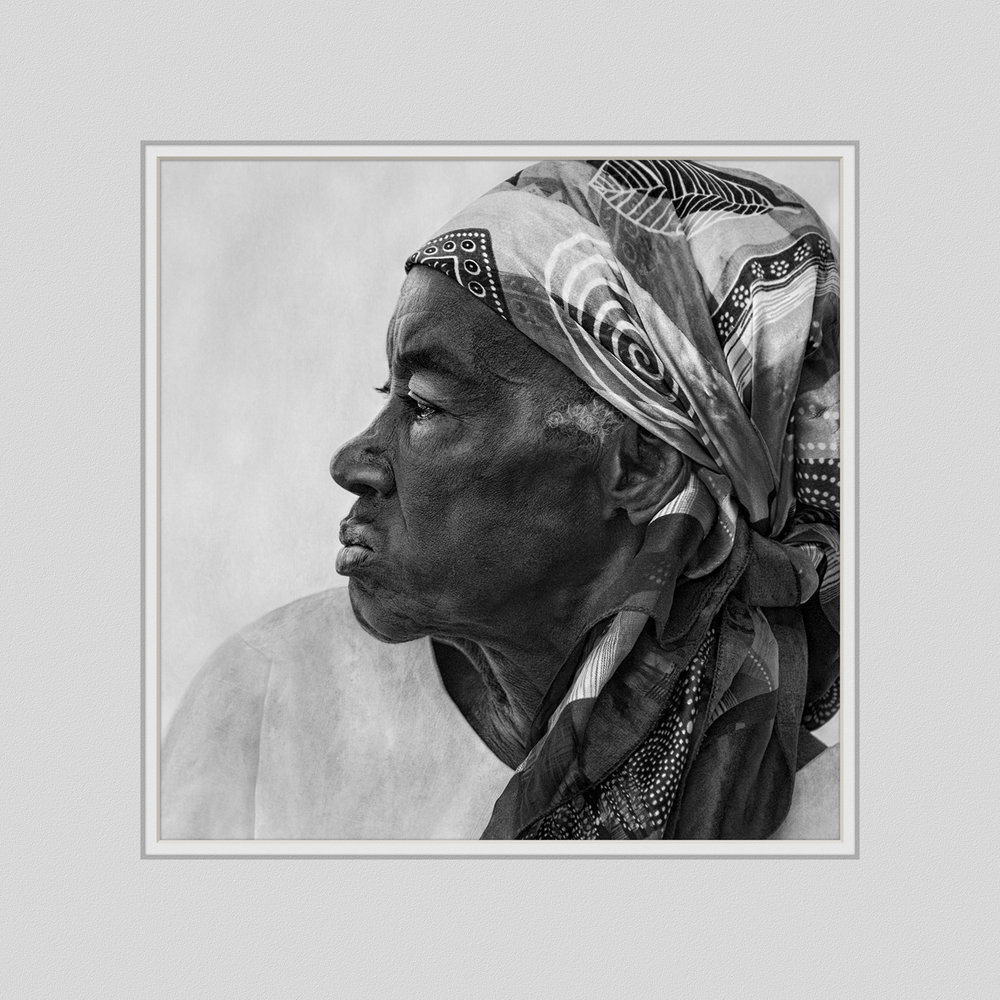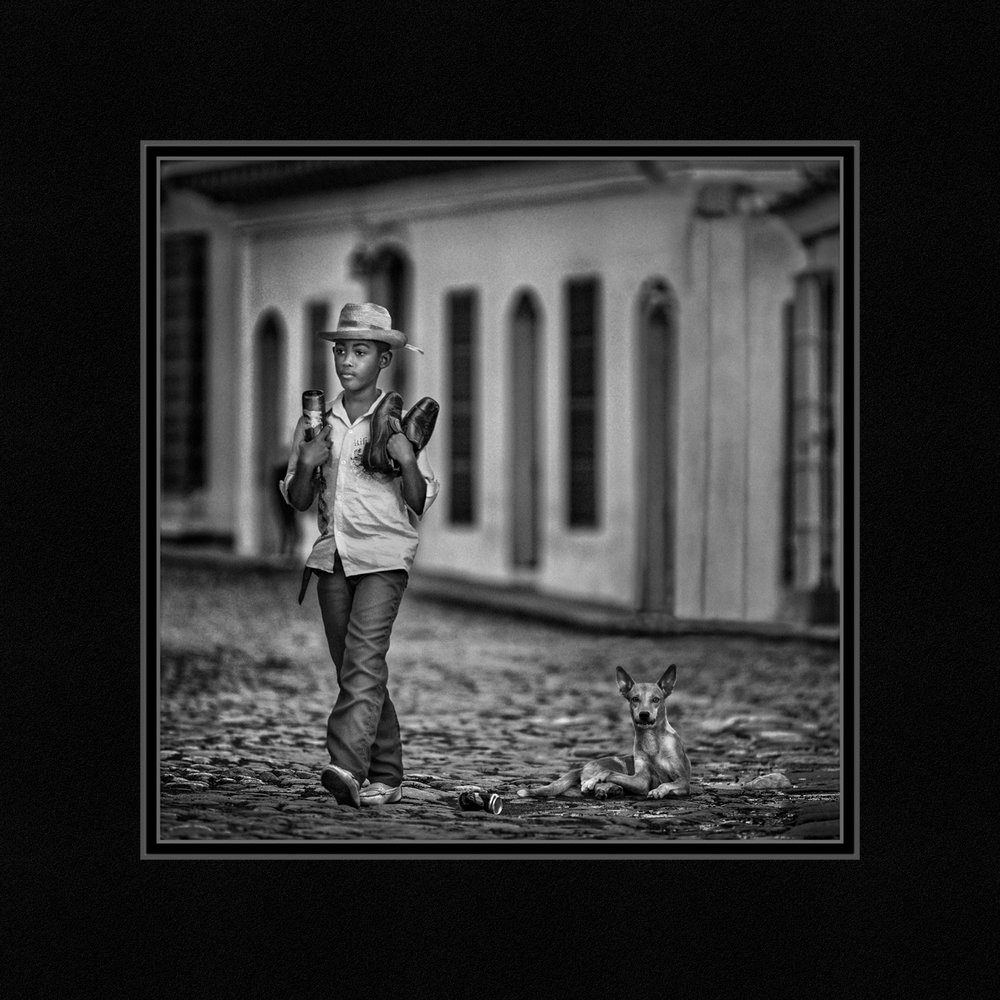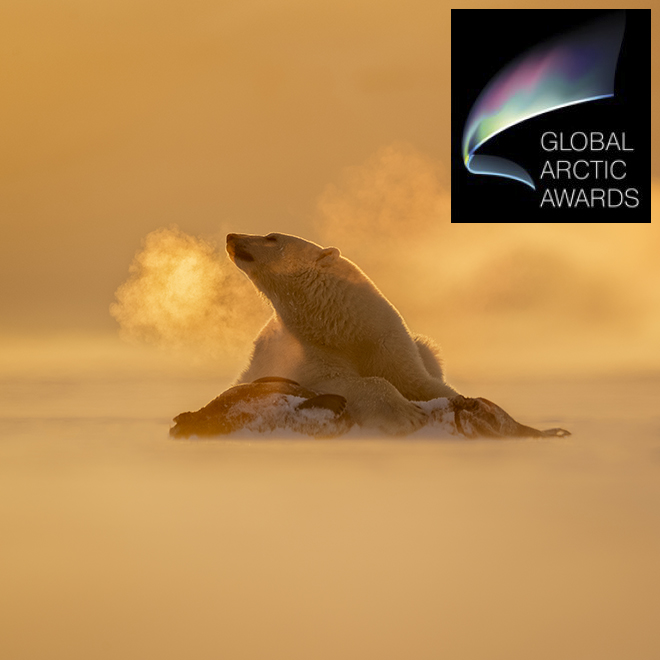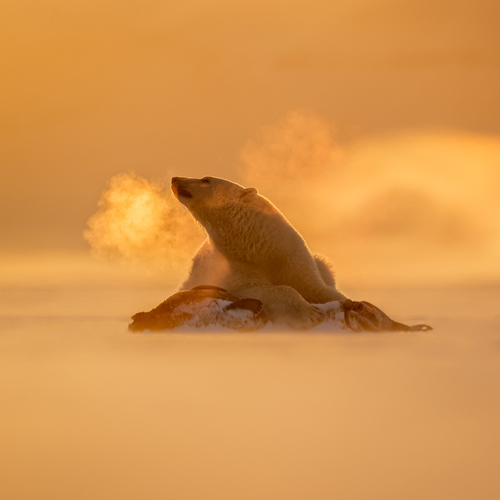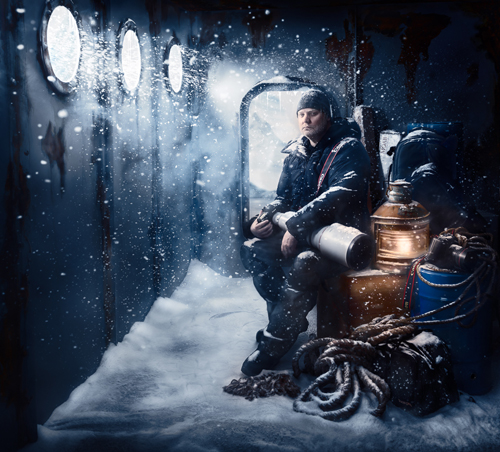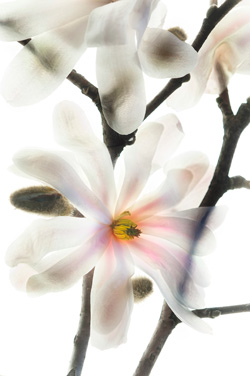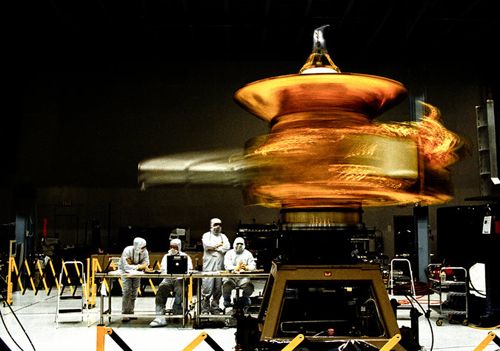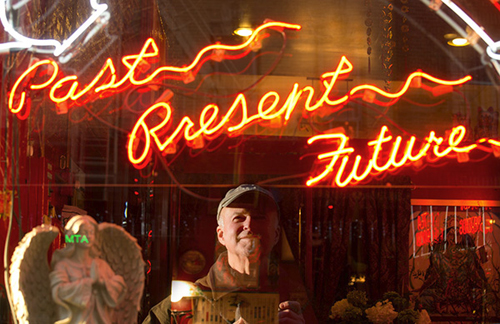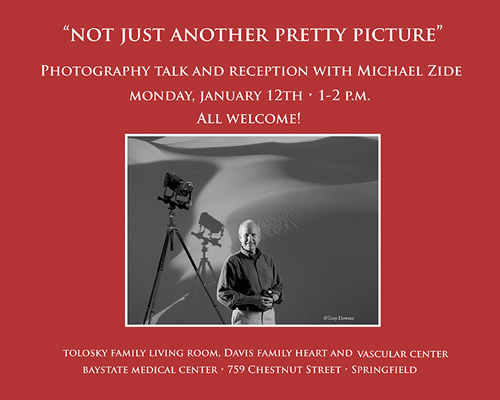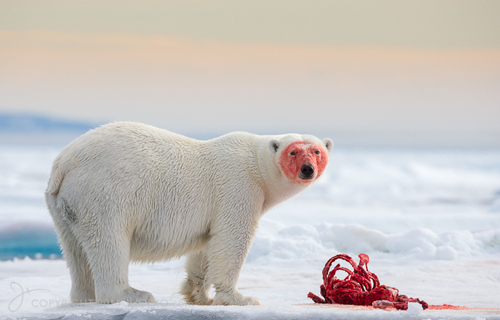Freedom Paper created an insightful blog post on Moab Master, Harold Davis, using Moab Paper for his own creative work.
"To make photographic art, it’s not essential to print your own images. But to experience your full creative potential, you may want to – especially when you can easily order so many different types of Moab Paper and other top brands of inkjet photo papers from Freedom Paper.
For example, renowned photographer-artist-author-teacher Harold Davis can’t imagine letting someone else print his images. Printing is how he fully realizes the image he envisions before he even snaps the camera shutter or opens Photoshop.

Harold Davis signs the first copy of his fine-art portfolio, Botanique. The portfolio blends contemporary photography and printing techniques with old-world bookmaking methods. Photo courtesy of Harold Davis.
After experimenting with many different papers, he became a fan of Moab paper and was named a Moab Master in 2012. He prints some of his HDR (High Dynamic Range) images on Moab Slickrock Metallic inkjet paper and has created floral images such as “Peonies mon amour” on the Unryu paper that is part of Moab’s collection of Japanese Washi papers.
In addition to making individual prints, Harold Davis and his wife, graphic designer Phyllis Davis, have collaborated on a series of limited edition, handmade portfolio books. Their first book project, Botanique, was a Kickstarter-funded project that featured 21 original botanical art prints on archival vellum, Moab Moenkopi Unryu Washi, Moenkopi Kozo Washi, Moab Slickrock Metallic Pearl, and Colorado Fibergloss photographic paper. Each book was hand-cut and bound by hand. The book includes three panoramic-sized prints as foldouts and ships with a signed 9 x 12 inch print of Harold Davis’ popular image, “Red Peonies.”
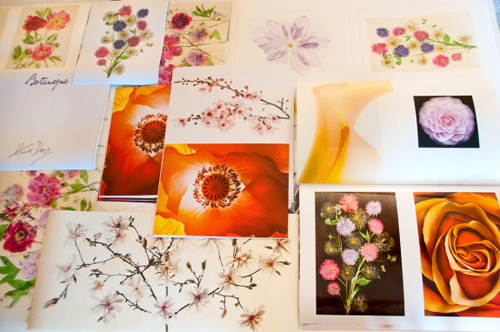
The floral images in “Botanique” show what’s possible with the digital workflow and backlighting technique Harold Davis invented to create luminous translucent imagery. For the portfolio pages, Davis chose the Moab inkjet or art paper that best matched the boldness or delicacy of the image. Photo: ©Harold Davis
Harold and Phyllis are currently working on his next limited edition portfolio, “A Modern Pilgrimage: Kumano Kodo.” This collection will feature a series of 13 images including a 9 x 26 inch panorama printed on a 16 ½ foot long roll of Moab Moenkopi kozo washi. The paper will be folded and placed in a signed cover that is itself a mountain panorama of Japan.
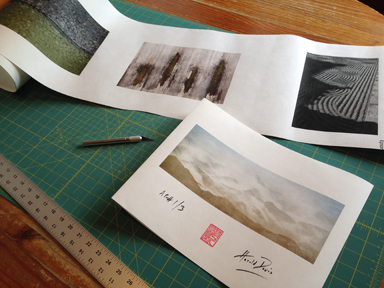 Pages for the Kumano Kodo portfolio are printed on the roll and hand trimmed, scored, signed, and bound. Photo: ©Harold Davis
Pages for the Kumano Kodo portfolio are printed on the roll and hand trimmed, scored, signed, and bound. Photo: ©Harold Davis
“One of the most important things a printmaker can do is match the surface of the paper with the image,” says Davis. “Some images go well with some papers, and look terrible on others.” He acknowledges that it takes a fair amount of trial and error to discover the right paper for your images. But this experimentation is integral to your ability to develop a body of work that is yours alone.

For the Star Magnolia spread in “Botanique,” Harold Davis chose Moab Moenkopi Unryu Washi paper. Photo: ©Harold Davis
In a post on his blog entitled, “Making the Artisanal Inkjet Print,” Davis notes that prints created using a high-end inkjet printer go by a variety of names, including: inkjet print, pigment print, giclée, and piezo print. Like many art gallerists and collectors, Davis favors the term “pigment print.”
He attributes the widespread confusion of terminology to the incredible diversity of uses of inkjet technology: “You can buy inkjet prints at Costco, where they are honestly labeled. You can buy the somewhat pretentiously named giclee prints from companies that reproduce art. Or you can collect one-off artisanal pigment prints from a solo artist like me who makes the prints one at a time in his studio.”
While Costco, giclée printmakers, and solo artists may all use the same make and model of wide-format inkjet photo printer, the difference between a mass-produced decorative print and an artisanal inkjet print is about much more than what printer was used. Harold points out that three photographers can use the exact same cameras and produce results that are vastly different in artistic style and technical quality. Solo artists who own wide-format printers tend to craft artisanal prints one at a time and fuss over every detail.
“Quality in digital printmaking really comes down to know the quirks of the printer, understanding how to get the most out of digital workflow, how the technology is used, the vision behind the printmaking, and the care and time that is spent on each individual image,” explains Davis. “Just as much craft, skill, and artistry go into making a good artisanal digital inkjet print as ever went into a print made in the chemical darkroom.”
“If you include output file preparation, printing, and post-printing issues, an average print might take five to ten hours,” says Davis. “Sometimes I print an image 20 times until it is right and I get that one great print.”
For example, learning how to make perfect prints on specialty papers such as Moab’s Moenkopi Washi papers may require adjusting the pressure your printer exerts on the papers so they feed through the printer properly. The surface of the Slickrock Metallic paper is quite delicate and can be easily scratched. Yet the polyester content of the metallic inkjet paper makes it difficult to cut, even with the printer’s onboard cutter.
“A relatively unusual image is going to marry nicely with Slickrock Silver,” said Davis. “You have to be going for something that’s not a classic look.” Plus, you have to be aware of how the print will be lit. The colors in the image may look different when the print is viewed from different angles.
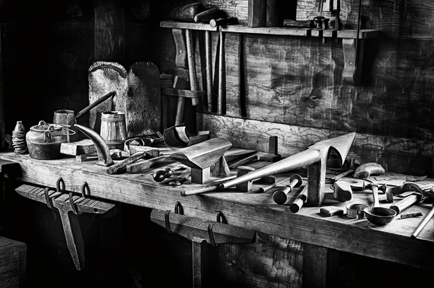
This HDR monochrome image of a workshop at the Fort Ross Historic Park takes full advantage of the qualities of Moab Slickrock Metallic Silver 300 paper. Photo: ©Harold Davis
Davis has been crafting his own art prints and art books for about 10 years, drawing upon his years of experience as a accomplished painter, commercial photographer, and author of dozens of books on technical subjects.
In the 1980s, Harold Davis spent a lot of time in darkrooms while supporting himself as a commercial photographer. He made his own color and black-and-white prints, and worked closely with lithographers. He says, “Making prints has always been a part of my story as a professional photographer.”
In the 1990s, Davis got married and left New York. He held a number of different jobs and started writing a series of computer-related books. When his publisher asked him to write a book on digital photography in 2004, Davis picked up a digital SLR for the first time and discovered that with a digital camera, Photoshop, and other software, he could combine his love of painting with his love of photography. He considers his current Photography 2.0 career vastly different from his Photography 1.0 career in the 1980s.
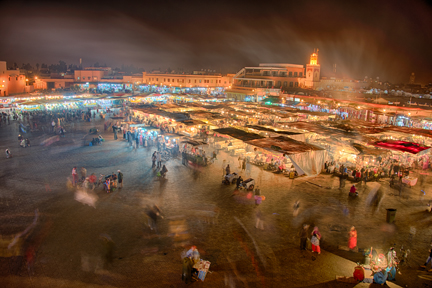
Harold Davis’ talent as a painter is evident in this beautifully rendered photograph of the Jamaa-el-Fnaa marketplace in Marakesh, Morocco. It was printed on Moab’s new Juniper Baryta Rag 305 paper. Photo: © Harold Davis
Harold Davis describes his current work as “Digital paintings that use photographs as the medium.” With this unique style, Davis is at the forefront of an emerging art movement in which creative photographers can do far more than capture an elusive moment in time. Thanks to Photoshop (which recently celebrated its 25th anniversary), photographic artists such as Harold Davis can now create images that depict almost any type of scene or subject they can envision in their mind’s eye.
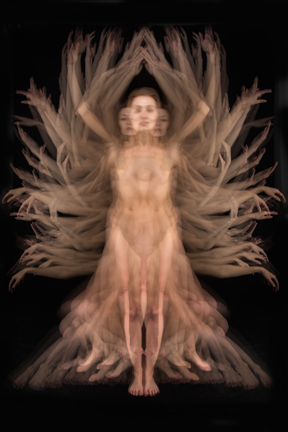
In this multiple exposure image, Harold Davis envisions image “Hekatonkheires” the three mythical Greek gods of violent storms and hurricanes. The artisanal pigment print takes full advantage of the qualities of Moab Slickrock Metallic Pearl 360 paper. Photo: ©Harold Davis
His collectors agree that Davis is doing important work. One individual who has collected Harold Davis’ work for more than five years says he is increasingly excited about the possibilities created by Harold’s unusual and effective use of technology in support of the classical tenets of photographic art: “I would compare his work to Ansel Adams’ and Edward Weston’s work during the crucial 1930s and 1940s time frame.”
To inspire other creative souls who want to push the boundaries of what’s possible with photography today, Harold Davis conducts workshops and posts instructional webinars. Some of the photography books he has written include:
- Monochromatic HDR Photography
- Creating HDR Photos
- Photographing FlowersPhotographing Waterdrops
- Creative Black & White
- Creative Lighting
- Creative Landscapes
- Creative Close-ups
In his award-winning photography book, “The Way of the Digital Photographer,” Davis emphasizes that previsualizing an image should not only include how a shot is composed and lit but also how it will be processed in Photoshop and printed.
His next book, which Focal Press has scheduled for publication in August, 2015, is entitled “Achieving Your Potential as a Photographer.” The book’s subtitle is “A Photographer’s Creative Companion and Workbook.” The book presents an organized and cohesive plan for kickstarting creativity, and then taking the resulting work into the real world. The concepts are accompanied by a workbook with exercises you can use to put them into everyday practice.

When Harold Davis was selected as a Moab Master, Marc Schotland, vice president of marketing and global development for Legion Paper said, “Harold is a renowned photographer, artist and author who offers a unique vision and voice to the Moab Masters program. Harold’s meticulous printing skills are present in every print he produces, and we’re thrilled that he chooses Moab as the paper to support his images.”
Freedom Paper is proud to offer an excellent selection of Moab paper and Moab Chinle archival boxes and portfolios for protecting and presenting your work. We also sell a sampler pack that includes 2 sheets of 16 different types of Moab photo and art papers.
We encourage all photographers to continue to experiment and see what’s possible with Photography 2.0."











